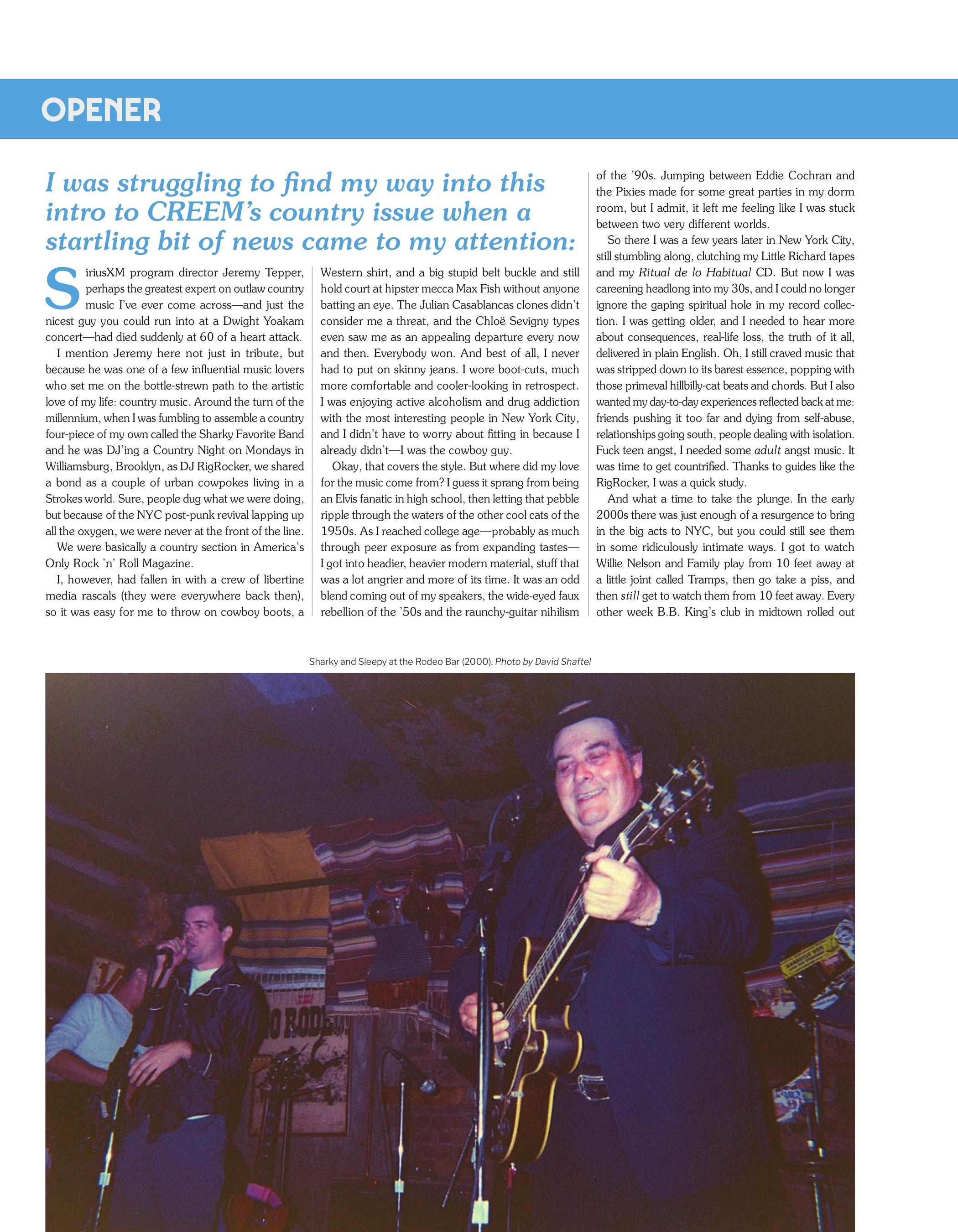Opener
The Gone Country Issue
SiriusXM program director Jeremy Tepper, perhaps the greatest expert on outlaw country music I’ve ever come across—and just the nicest guy you could run into at a Dwight Yoakam concert—had died suddenly at 60 of a heart attack. I mention Jeremy here not just in tribute, but because he was one of a few influential music lovers who set me on the bottle-strewn path to the artistic love of my life: country music.


I was struggling to find my way into this intro to CREEM’s country issue when a startling bit of news came to my attention:
SiriusXM program director Jeremy Tepper, perhaps the greatest expert on outlaw country music I’ve ever come across—and just the nicest guy you could run into at a Dwight Yoakam concert—had died suddenly at 60 of a heart attack.
I mention Jeremy here not just in tribute, but because he was one of a few influential music lovers who set me on the bottle-strewn path to the artistic love of my life: country music. Around the turn of the millennium, when I was fumbling to assemble a country four-piece of my own called the Sharky Favorite Band and he was DJ’ing a Country Night on Mondays in Williamsburg, Brooklyn, as DJ RigRocker, we shared a bond as a couple of urban cowpokes living in a Strokes world. Sure, people dug what we were doing, but because of the NYC post-punk revival lapping up all the oxygen, we were never at the front of the line.
We were basically a country section in America’s Only Rock ’n’ Roll Magazine.

